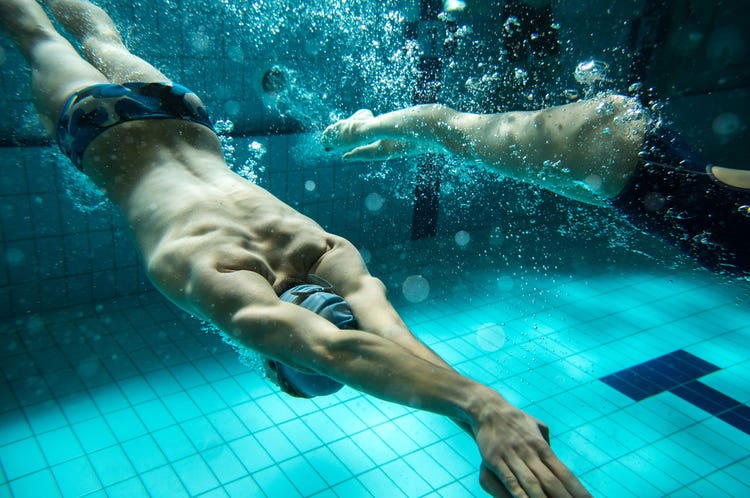Outwitting Nature with…Nature

Dr. Randy Wilber applies insight that starts with the body’s cellular response to change.
Human performance is about pushing the boundaries of physical adaptation. “Elite athletes use metrics to know when to train really hard and tear themselves down, and when to back off, and recover. And how to do it strategically around championships,” says Dr. Randy Wilber, Senior Sport Physiologist with the United States Olympic Committee.
Though he began his career at the USOC in 1993, Dr. Wilber has been fascinated with human performance since childhood. He remembers the 1968 Olympic Games held in Mexico City at an elevation of 7,500 ft. “That was when the East African runners really exploded onto the scene, in part, because they were used to running at altitude,” he says. It was the youngster’s first exposure to the effects of environment on sport – the field he would grow up to specialize in.
Nowadays, Dr. Wilber looks at how altitude, and heat, humidity, jet lag, air pollution and many other factors affect Team USA’s ability to compete. The bottom line, he says: “We can’t change the environment. Athletes need physiological, biological and medical strategies to compete in a hostile environment.”
But what about the factors that can be controlled? When we think of Olympic champions, we picture physical warriors, punishing training, and Rocky-like determination. But in the four years leading up to an Olympic and Paralympic season, exhaustion is not always the strategic choice.
Warning signs are subtle
According to Dr. Wilber, attention to nutrition, hydration and sleep can make all the difference for champions and everyday athletes alike.
“It starts with cellular inflammation. This is the response every human has to inadequate nutrition, hydration or rest. It triggers stress hormones like cortisol. Abnormally high levels of cortisol will compromise the immune system, and then the door is open to illness, injury and overtraining.”
Overtraining is when adaptation stops happening. Instead of seeing improvements, athletes start to lose strength, power, endurance, etc. While elite competitors have access to sophisticated measurements, Dr. Wilber says overtraining has two main tells, for everyday athletes.
Underperformance: “This is why tracking your workout is important. If you’ve done a specific workout many times before, and at the same time last year you were hitting certain marks in that workout, but now you’re seeing subpar marks in that workout, that’s possibly a sign of overtraining. And it doesn’t have to be in competitions, it could just be in workouts.”
Psychological Lack of Motivation: “If any of the Team USA athletes are struggling, in terms of wanting to train, that’s like a fireman not answering the call. They were born to compete, so if they’re showing up and saying they don’t want to train, it’s a problem.” It’s a far graver indicator for them, but for everyday athletes, it can also be a sign of overtraining.
Adaptation applies the body’s response
Fortunately for Team USA, it’s a problem that Dr. Wilber and his team work very hard at understanding. When he thinks of Olympic and Paralympic champions, he doesn’t see an exhausted Sly Stallone. He sees a garden.
In the analogy he uses with his athletes, Dr. Wilber likens their daily training time to planting the seeds in a garden. Next, nutrition and hydration “fertilize” the seeds. Finally, and perhaps most importantly, is six to eight hours of sleep.
“What happens during sleep,” he says, “is like what happens below the surface in the garden, when the seed germinates and grows. That seed grows into a big, beautiful, strong athlete. Sleep is when the training and nutrition from the day have full effect and benefit.”
Dr. Wilber continues, “Deep sleep is a metric of hormonal and physiological recovery. During deep sleep we get human growth hormone response, letting the little seed grow. If you only get four hours of sleep, and only 10 percent of that is deep sleep, the seed won’t grow!”
Now, his team is tracking the quantity and quality of Team USA’s sleep relative to intensity of training and recovery. But the focus on sleep doesn’t stop there.
In Rio, due to the TV broadcast schedule, Team USA swimmers‘ “morning session” will start at 1 p.m., and finals will run from 10 p.m. to midnight. “You tack on warming down, going to medical for massage, drug control, speaking to media, getting back to the Athlete Village and getting something to eat, and you’re going to bed at 3 a.m., if not later,” Dr. Wilber says.
“We’ve developed a schedule and strategy through the training camps in July that will adjust circadian rhythms to the 10 p.m. to midnight time slot. The athletes will go through a checklist we’ve developed, to help them fall asleep rapidly and comfortably without sleep aids. Monitoring lets us know if they’re sleeping well or if we need to intervene.”
One item on their checklist is cheap and simple – and useful for champions and weekend warriors alike: blackout shades and foam earplugs. Dr. Wilber says that sleep is dictated by how much light the retina senses. A darker room means a stronger endogenous (natural) melatonin response, and better sleep quality. Though his team initially used this strategy to deal with jetlag, its effectiveness means it is now daily practice.